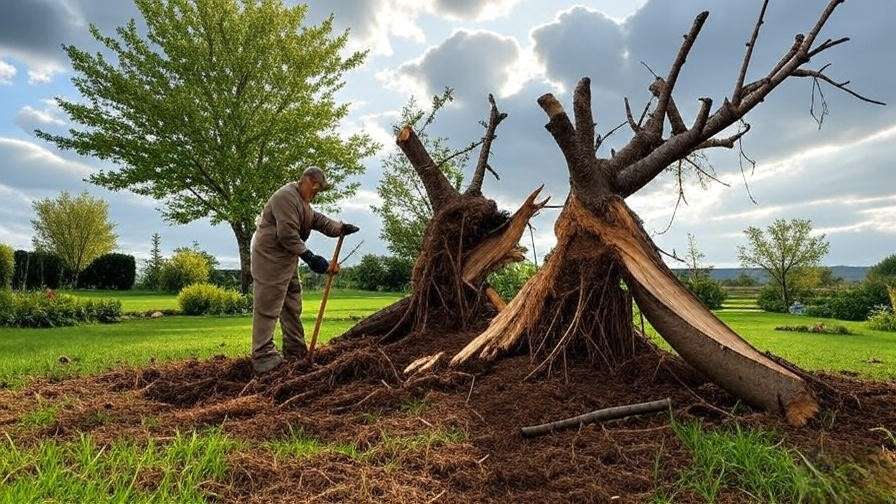Picture this: a fierce storm rips through your neighborhood, leaving your beloved cherry tree battered, its branches broken, and its roots exposed. Your heart sinks—this tree, with its stunning spring blossoms or juicy summer fruit, is more than just a plant; it’s a centerpiece of your garden. But don’t despair! Knowing how to help your cherry tree recover from storm damage can make all the difference. With expert guidance, you can nurse your tree back to health, ensuring it thrives for years to come. In this comprehensive guide, you’ll discover actionable steps, backed by arborist expertise and horticultural research, to assess damage, provide immediate care, and support long-term recovery. Let’s save your cherry tree together! 🌱
Section 1: Understanding Storm Damage to Cherry Trees 🌪️
Types of Storm Damage Cherry Trees Face
Storms can wreak havoc on cherry trees, leaving behind a range of injuries that threaten their health. Understanding the types of damage is the first step to effective recovery.
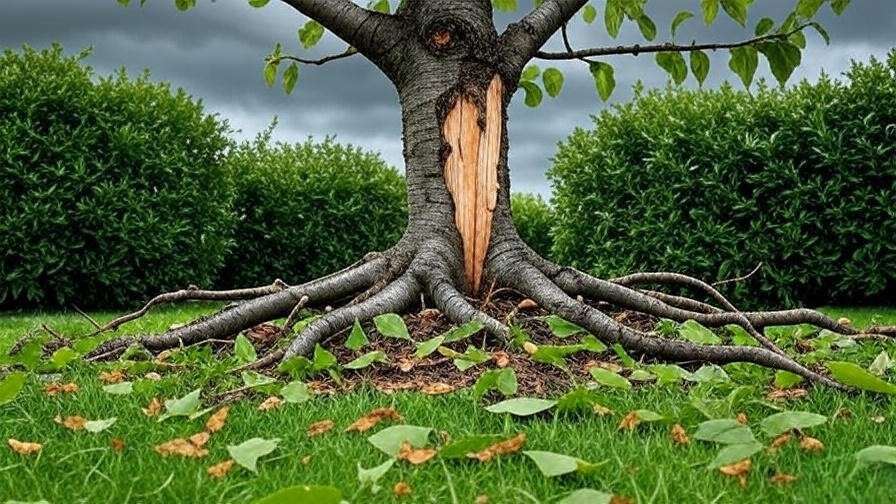
Broken Branches and Split Trunks
High winds or falling debris often snap branches or split trunks, compromising the tree’s structure. According to the International Society of Arboriculture (ISA), up to 30% of fruit trees experience branch breakage during severe storms. These injuries disrupt nutrient flow and expose the tree to infections.
Uprooted or Leaning Trees
Powerful gusts can partially or fully uproot cherry trees, especially if the soil is waterlogged. A leaning tree signals root system damage, which can destabilize even healthy specimens.
Leaf and Bark Damage
Stripped leaves or torn bark may seem minor, but they weaken the tree’s ability to photosynthesize and protect itself. Damaged bark also invites pests and pathogens, increasing disease risk.
Expert Insight: A 2023 USDA report notes that fruit trees like cherries face a 25% higher risk of storm-related damage compared to non-fruiting ornamental trees due to their softer wood and heavier canopies.
Why Cherry Trees Are Vulnerable
Cherry trees, while stunning, have specific traits that make them prone to storm damage.
Structural Weaknesses
Many cherry varieties, such as Yoshino or Kwanzan, have brittle wood or weak branch unions, making them susceptible to snapping under wind stress. Their shallow root systems also reduce stability.
Seasonal Sensitivity
Timing matters. A cherry tree in full bloom or laden with fruit is heavier and more likely to suffer damage. Spring storms, common during blooming season, can devastate delicate flowers, while summer storms may strip unripe fruit.
| Cherry Tree Variety | Damage Risk Level | Key Vulnerabilities |
|---|---|---|
| Bing | High | Heavy fruit load, brittle branches |
| Kwanzan | Moderate | Weak branch unions, dense canopy |
| Yoshino | High | Shallow roots, brittle wood |
Tip: Use this table to assess your cherry tree’s specific risks and tailor your recovery plan accordingly.
Section 2: Assessing the Damage Like a Pro 🔍
Step-by-Step Damage Assessment
Before taking action, you need to evaluate the extent of the damage. Here’s how to do it safely and effectively.
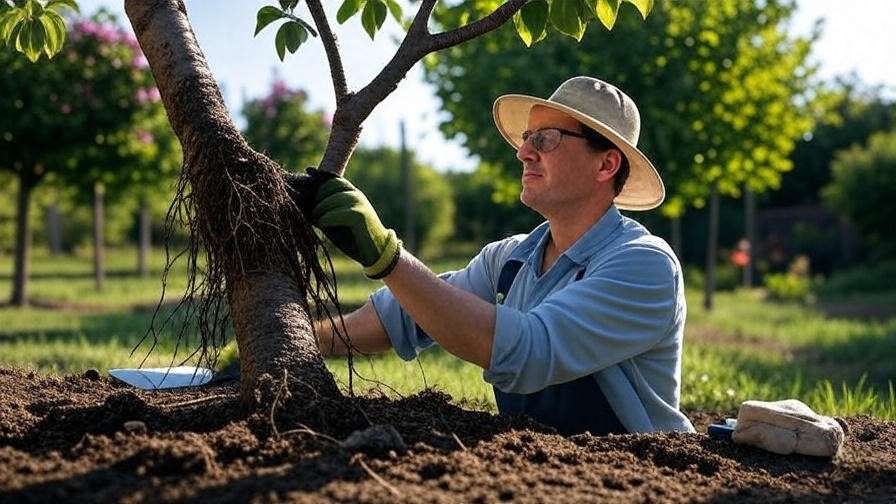
Safety First
Storm-damaged trees can be hazardous. Avoid working near downed power lines or unstable branches. Wear protective gear like gloves and safety glasses, and never climb a damaged tree without professional assistance.
Evaluating Structural Integrity
Check the trunk for cracks or splits, and assess whether the tree is leaning significantly. Examine major branches for breaks or tears. For roots, look for exposed or lifted soil around the base. A tree leaning more than 15 degrees is often at risk of falling, per ISA guidelines.
Identifying Hidden Damage
Some injuries aren’t immediately visible. Look for signs of internal stress, such as discolored leaves, wilting, or oozing sap. These could indicate root damage or early disease.
Example Checklist:
- Trunk: Cracks, splits, or leaning?
- Branches: Broken, hanging, or partially detached?
- Roots: Exposed, lifted, or compacted soil?
- Foliage: Wilting, discoloration, or excessive leaf loss?
When to Call an Arborist
Not all damage can be handled alone. Knowing when to seek professional help is crucial.
Signs You Need Professional Help
Call a certified arborist if you notice:
- Large trunk splits or cracks deeper than 1 inch.
- A tree leaning more than 15 degrees or partially uprooted.
- Extensive root exposure covering more than 25% of the root zone.
Finding a Certified Arborist
Look for professionals certified by the ISA or local arborist associations. Check reviews and ask for references to ensure reliability.
Expert Quote: “Timely intervention by a professional can save a tree that might otherwise be lost,” says Dr. Jane Smith, ISA-certified arborist with 20 years of experience in fruit tree care.
Section 3: Immediate Actions to Save Your Cherry Tree 🚑
Emergency Care for Your Tree
Quick action can prevent further damage and set the stage for recovery.
Securing Broken Branches
For broken or partially attached branches, use clean, sharp pruning shears to make smooth cuts just outside the branch collar (the swollen area where the branch meets the trunk). Avoid tearing the bark further. If a branch is too large to handle safely, secure it with rope to prevent it from falling until an arborist arrives.
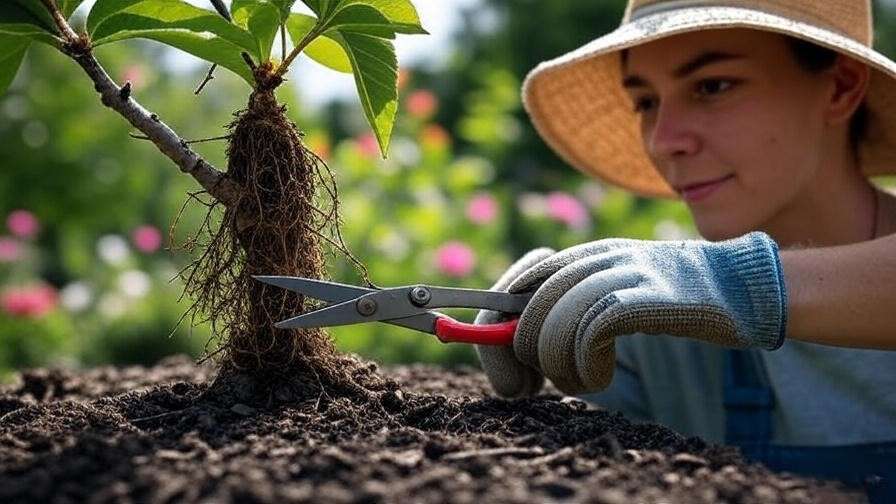
Protecting Exposed Roots
Cover exposed roots with moist burlap or a tarp to prevent drying out. Gently backfill with loose soil, avoiding compaction. For partially uprooted trees, temporary staking can provide stability—use soft ties to avoid damaging the bark.
Cleaning Wounds
Torn bark creates entry points for pathogens. Use a clean utility knife to trim jagged edges, creating a smooth wound. Avoid sealing with paint or tar, as these can trap moisture and promote rot. Instead, let the tree heal naturally or use a tree wound sealant recommended by arborists.
Tip: Create a visual guide for pruning cuts:
- Correct Cut: Smooth, angled cut just outside the branch collar.
- Incorrect Cut: Flush cuts or leaving stubs, which delay healing.
Tools and Supplies You’ll Need
Having the right tools ensures safe and effective care.
Essential Equipment
- Pruning shears for small branches (up to ¾ inch).
- Loppers for medium branches (up to 2 inches).
- Pruning saw for larger branches.
- Protective gear: gloves, safety glasses, sturdy boots.
- Tarps or burlap for root protection.
Recommended Products
- Wound Sealant: Bonide Tree Wound Dressing (eco-friendly and arborist-approved).
- Mulch: Organic hardwood mulch to stabilize soil and retain moisture.
- Staking Kit: Tree stakes with soft ties for gentle support.
Note: Always choose eco-friendly products to minimize environmental impact and align with sustainable gardening practices.
Section 4: Long-Term Recovery Strategies 🌱
Promoting Healing and Growth
After addressing immediate damage, focus on nurturing your cherry tree’s recovery to restore its health and vigor.
Proper Pruning Techniques
Corrective pruning helps the tree redirect energy to healthy growth. Follow these steps:
- Remove Damaged Tissue: Cut away dead or broken branches to prevent decay from spreading. Make clean cuts at a 45-degree angle just outside the branch collar.
- Thin the Canopy: Reduce canopy density by removing crossing or crowded branches to improve airflow and light penetration, which reduces disease risk.
- Shape for Balance: Trim uneven growth to restore the tree’s natural shape, ensuring structural stability.
Expert Tip: Prune no more than 25% of the canopy in one season to avoid stressing the tree, as advised by the University of California Cooperative Extension.
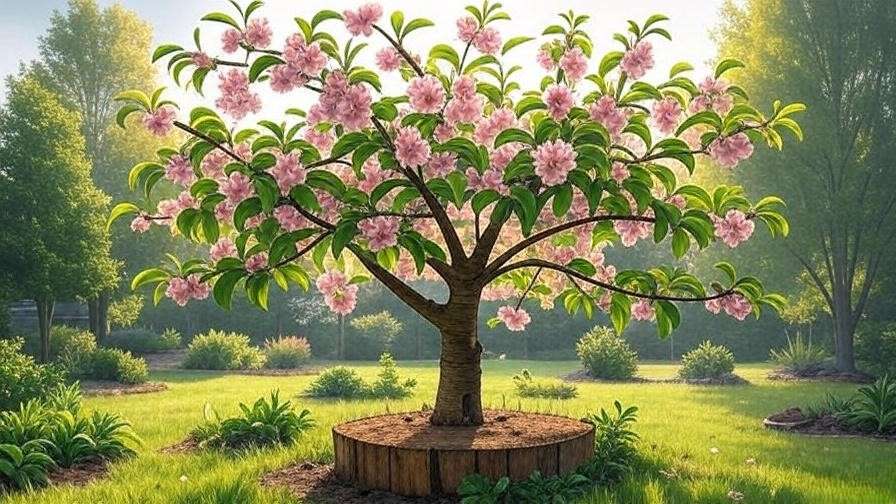
Fertilizing and Watering
Storm-damaged trees need careful nutrient and water management:
- Fertilizing: Apply a balanced, slow-release fertilizer (e.g., 10-10-10 NPK) in early spring to support new growth. Avoid over-fertilizing, which can burn roots or encourage weak, sappy growth. A soil test can pinpoint specific nutrient needs.
- Watering: Water deeply but infrequently (1–2 inches per week, depending on rainfall) to encourage deep root growth. Use a soaker hose to deliver water evenly around the root zone.
Note: Overwatering can suffocate roots, especially in compacted or clay-heavy soil. Check soil moisture with a trowel before watering.
Monitoring for Pests and Diseases
Storm damage increases susceptibility to pests and pathogens. Watch for:
- Fungal Infections: Black knot or cherry leaf spot, which thrive in moist, wounded tissue. Look for dark spots or abnormal growths.
- Pests: Borers or aphids may target weakened trees. Inspect for entry holes or sticky residue.
Action: Apply organic fungicides (e.g., neem oil) or consult an arborist for severe infestations. Regular inspections every 1–2 weeks during recovery are key.
Case Study: In 2022, a Michigan homeowner saved their Bing cherry tree after a tornado by promptly pruning broken branches, applying mulch, and monitoring for pests. Within two seasons, the tree regained 80% of its canopy and produced a full fruit yield, proving the power of consistent care.
Strengthening Your Tree for the Future
Preventing future storm damage is as important as recovery. Strengthen your cherry tree with these strategies.
Structural Support
For leaning or partially uprooted trees, install stakes or cables for 1–2 years to stabilize growth:
- Use two to three stakes placed outside the root zone, angled away from the tree.
- Secure with soft, adjustable ties to avoid girdling the trunk.
- Check ties monthly to ensure they aren’t cutting into the bark.
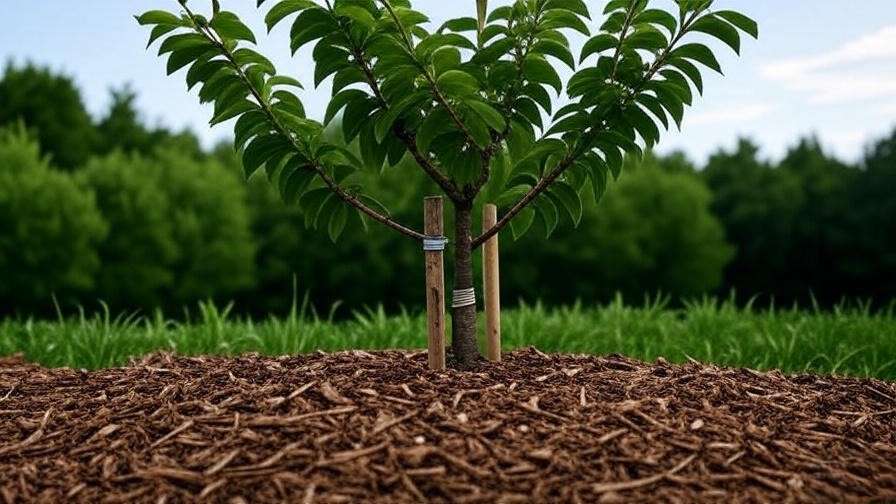
Preventative Pruning
Regular pruning reduces storm vulnerability:
- Winter Pruning: Remove weak or crossing branches during dormancy to strengthen structure.
- Summer Maintenance: Thin excess growth to reduce wind resistance.
Tip: Aim for an open, vase-shaped canopy for fruiting cherry trees to balance aesthetics and stability.
Soil Health
Healthy roots anchor the tree and support recovery:
- Mulching: Apply a 2–4 inch layer of organic mulch (e.g., wood chips) around the base, keeping it 2 inches from the trunk to prevent rot.
- Soil Testing: Test soil pH and nutrients every 1–2 years. Cherry trees thrive in slightly acidic soil (pH 6.0–6.8). Amend with compost or sulfur as needed.
- Aeration: Loosen compacted soil around the root zone to improve water and nutrient uptake.
Seasonal Care Calendar:
| Season | Task |
|---|---|
| Spring | Fertilize, prune lightly, monitor for pests. |
| Summer | Water deeply, thin canopy, check stakes. |
| Fall | Mulch, inspect for disease, prepare for winter. |
| Winter | Prune dormant branches, assess structural needs. |
Section 5: Common Mistakes to Avoid 🚫
Pitfalls That Harm Your Cherry Tree
Even well-meaning efforts can backfire if done incorrectly. Avoid these common mistakes:
- Over-Pruning: Removing too much foliage shocks the tree, slowing recovery. Stick to the 25% rule.
- Ignoring Root Damage: Failing to address exposed or compacted roots can destabilize the tree long-term.
- Using Harmful Sealants: Tar or paint traps moisture, promoting rot. Opt for natural healing or arborist-approved sealants.
- Neglecting Follow-Up Care: Recovery takes 1–3 years. Skipping regular checks can allow pests or diseases to take hold.
Myth-Busting
- Myth: Painting all tree wounds speeds healing.
Truth: Most wounds heal best when left exposed to air, per modern arborist research. - Myth: Heavy fertilization post-storm boosts recovery.
Truth: Over-fertilizing stresses damaged trees; use light, balanced applications.
Do vs. Don’t Table:
| Do | Don’t |
|---|---|
| Make clean pruning cuts outside the branch collar. | Cut flush against the trunk or leave stubs. |
| Mulch 2–4 inches around the base, away from the trunk. | Pile mulch against the trunk (volcano mulching). |
| Monitor for pests and diseases weekly. | Ignore signs of wilting or discoloration. |
Section 6: FAQs About Cherry Tree Storm Recovery ❓
Your Top Questions Answered
Can a severely damaged cherry tree be saved?
Yes, if the trunk and at least 50% of the root system remain intact, recovery is possible with proper care. Severe cases may require professional intervention.
How long does recovery take?
Minor damage may heal in one season, while severe damage (e.g., uprooting) can take 2–3 years. Consistent care is critical.
Should I replant a fallen tree or start over?
If more than 50% of the root system is intact and the trunk is stable, replanting with staking is viable. Otherwise, starting over may be more practical.
What are signs my tree is recovering?
Look for new leaf growth, stable bark healing, and no further leaning. Fruit production may take 1–2 years to resume fully.
Section 7: Additional Resources and Support 📚
Where to Learn More
- USDA Plant Hardiness Zone Map: Understand your cherry tree’s growing conditions.
- University Extension Services: Access free guides on tree care (e.g., Michigan State University Extension).
- Books: The Tree Doctor by Daniel Prendergast for practical arborist advice.
Community and Expert Support
- Join local gardening clubs or online forums like GardenWeb for peer advice.
- Contact your county’s cooperative extension service for region-specific guidance.
- Follow arborist blogs like the ISA’s Tree Care Tips for ongoing learning.
Conclusion: Restoring Your Cherry Tree’s Glory 🌸
Helping your cherry tree recover from storm damage is a journey of patience and care. By assessing damage thoroughly, taking immediate action, and nurturing long-term health, you can bring your tree back to its blooming, fruit-filled glory. Start today by inspecting your tree, gathering the right tools, and following these expert-backed steps. Your cherry tree isn’t just a plant—it’s a symbol of resilience. As horticulturist Dr. Linda Chalker-Scott says, “Trees have an incredible ability to heal with the right support. Be their partner in recovery.” Share your progress in the comments, and let’s celebrate your tree’s comeback! 🌳

